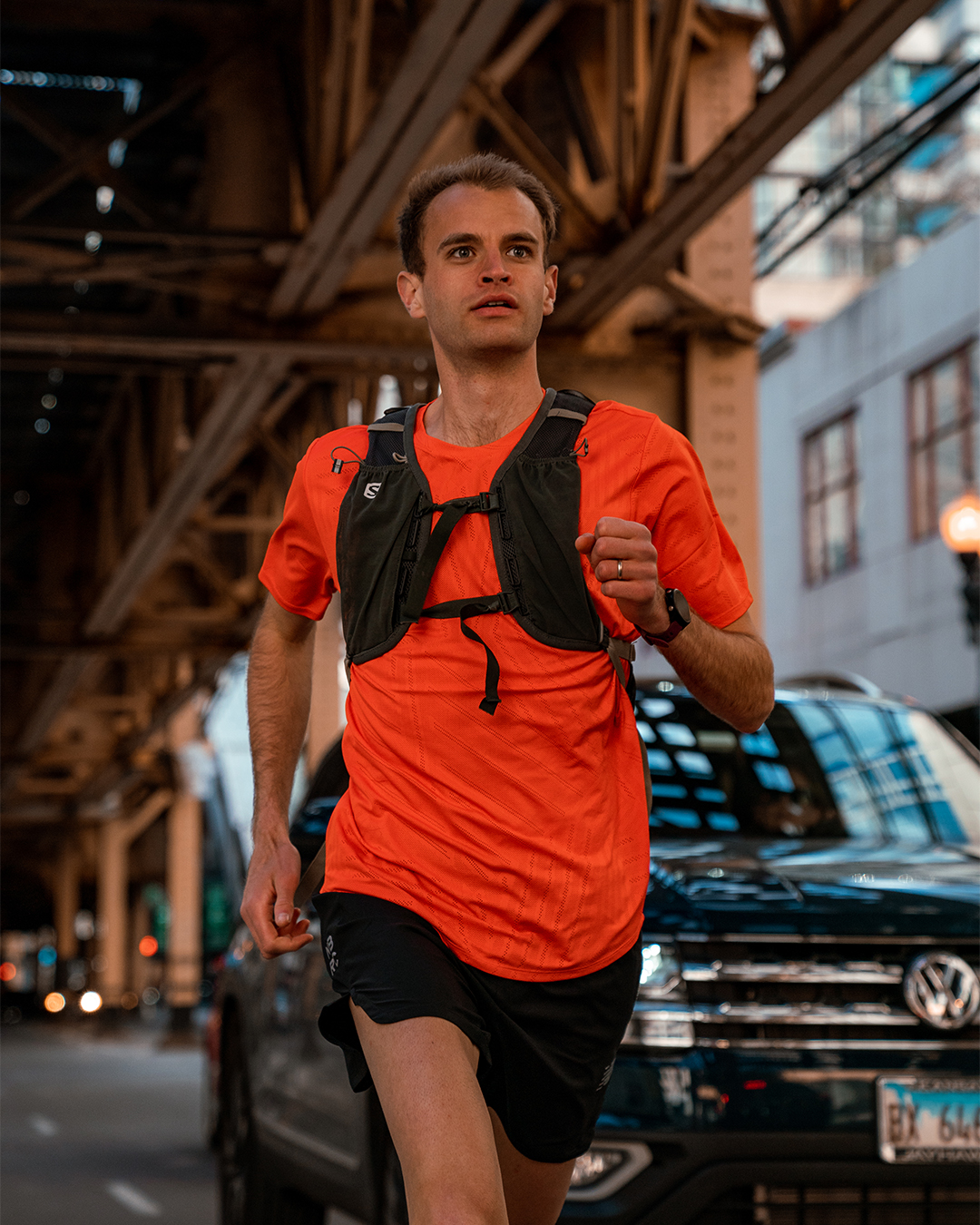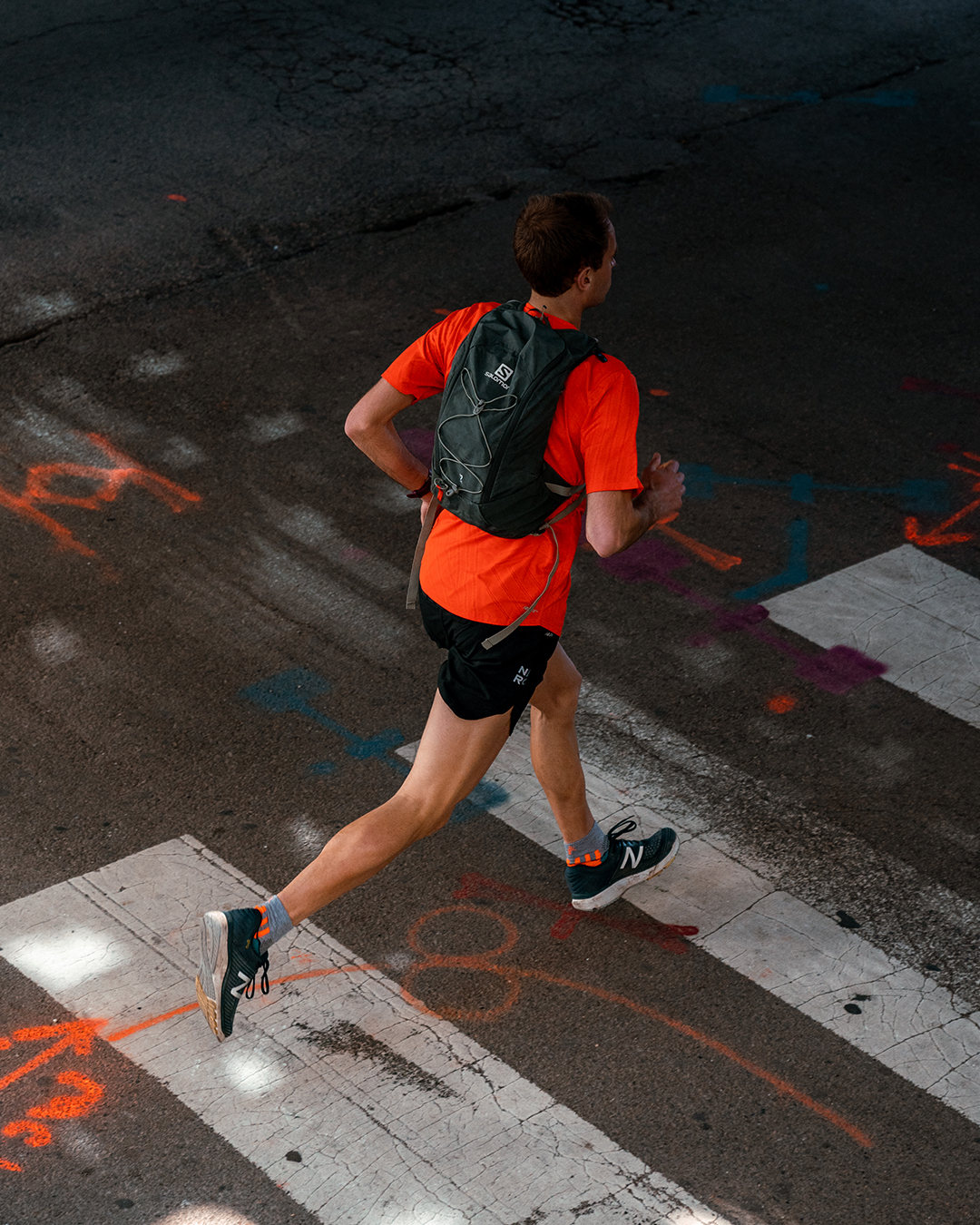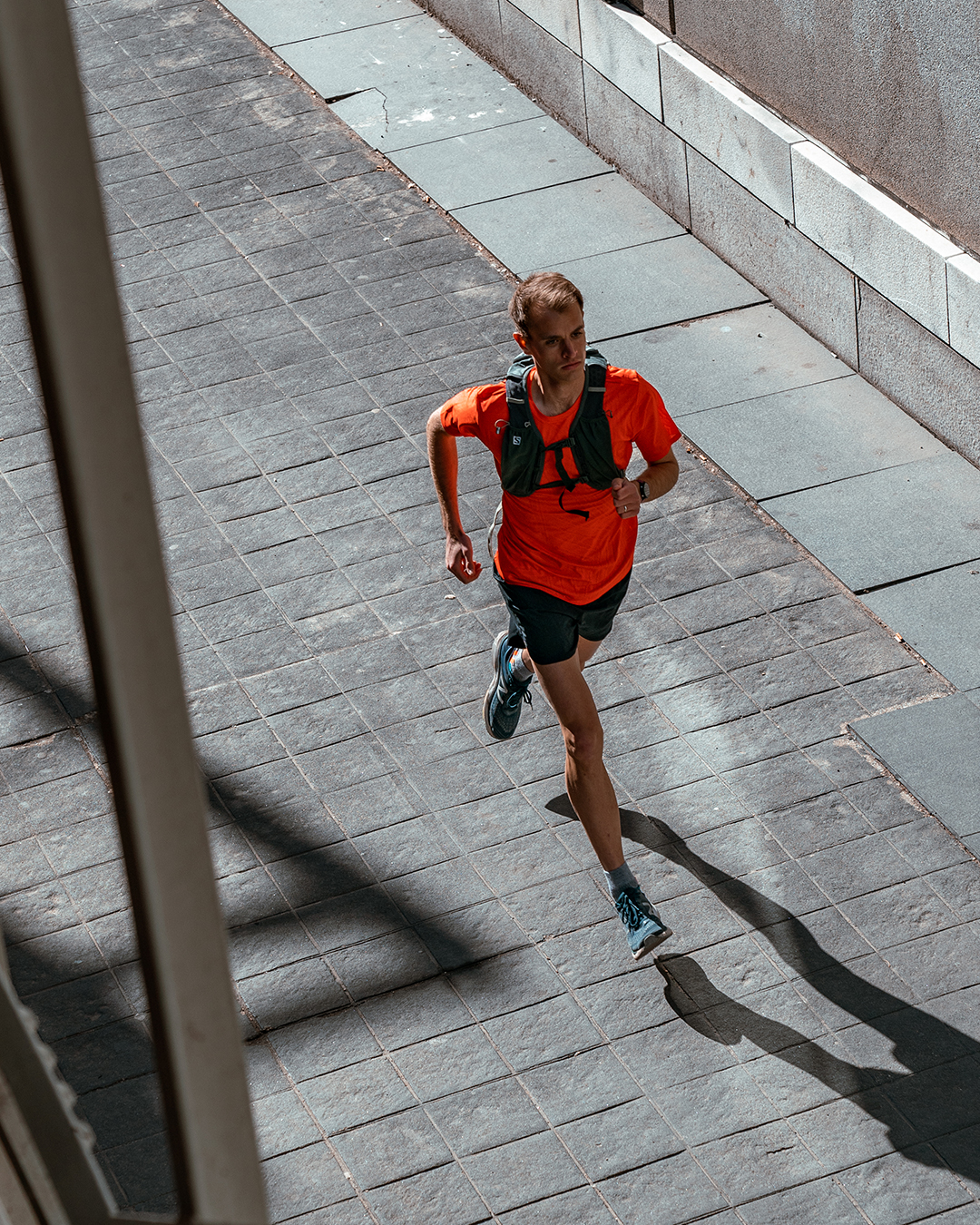FEATURE: Reaching a Run Commute State of Mind With Andrew Rylaarsdam
Written by: Liam Gayter

A car horn blares as the morning commuters inch their way to the office. The crowded Chicago streets appear more like a packed parking lot than a functioning road. A runner zooms past the several thousand tons of gas-guzzling cars, with him, a running pack containing scrubs, a laptop, and his lunch. Andrew Rylaarsdam, a Michigan native, strides through the congested streets, commuting to the Metra powered by his moving legs.
“I've never owned a car, which, right now being in the city, I don't need at all. I used to take my bike to the Metra and hop on at Union Station, catch an express train to Downers Grove, and then I’d hop off and bike to campus,” said Andrew. “ But then it got really snowy and super cold and so I didn't want to ride my bike. I found I stayed a lot warmer running so I just started running the commute.”
Like many American teens, Andrew dreamed of getting the keys to his own sparkling new car but also like many American teens, he didn’t think about the economic and environmental responsibilities of owning one.
“I remember wanting to get a car when I turned 16. My parents said, ‘That’s fine but before you get the car, we're going to sit down and make a budget for what it's going to cost,’” explained Andrew. “We went through each item, the insurance, gas, oil changes, maintenance and obviously purchasing the car. After that, I realized I couldn’t actually afford to have a car right now. Since graduating from high school, I don't think there's ever been a point that I really wanted a car just for the simplicity, for the budget, and for the environment.”
 |
 |
In a time in history where we have come to terms with our impact as human beings on our planet it is important we take steps no matter how big or small to make positive change. Perhaps the most important aspect of run commuting is the environmental impacts.
“So often, simplicity is directly tied to being environmentally friendly. In general, I just try to live my life with fewer possessions because it makes things less complicated and it's good for the earth at the same time,” says Andrew.
According to the Census Bureau, in 2018 there were 3,456,125 vehicles used for commuting in the Chicago metropolitan area. According to the Environmental Protection Agency (EPA) the average passenger vehicle emits about 404 grams of CO2 per mile. By simply running, walking, or biking one could emit zero greenhouse gases on their commute.
 |
 |
If you are already a runner, chances are you have the gear to start running your commutes. In addition to running shoes, the only gear you might need to purchase is a properly fitting running backpack.
“The bag is super important. Unless you're able to have literally everything at the office,” says Andrew. “I take my lunch, a pair of scrubs, and my computer every day. I have a 12-liter running backpack.”
Running packs or vests are designed like tight-fitting backpacks, having one major pouch along with several other smaller pockets to pack your phone, water bottle, or a snack for on the road. The idea behind the snug fit is so that all the objects are held close to you, suppressing the major bounce you would get from a normal pack the opposite of when you were in middle school carrying a backpack twice your size.
Andrew recommends paying attention to the fit across your chest and stomach, to make sure it’s not invasive on your breathing.
“If it's connected pretty snugly and as long as it's not just hanging far off my back, it works out really well,” says Andrew. “I'm surprised, you run a little slower but it's not painful or uncomfortable.”
As far as nonconventional pieces of gear, Andrew has a few tricks up his sleeve.
 |
 |
“I have some neoprene fly fishing gloves that help keep my hands warm when it’s like 45 degrees and raining,” laughed Andrew.
Just like any piece of gear, getting the right advice is just as important. Andrew has a few tips from the hundreds of miles he’s commuted.
“Leave with a little time to spare the first couple of times, after I got into a routine, I knew exactly when I had to get up and it just all played out seamlessly. Also, just try to be as relaxed as possible.”
On top of allowing enough time to get there and not worrying about pace, Andrew says to have a plan to either shower at your place of work or even use baby wipes and a stick of deodorant if a shower isn’t available.
“There's been some times that I showed up to class without being able to shower and just sat a couple of rows back, but I don't want to walk into a room smelling like I just did my run,” admitted the tall Michiganian.
Being a med student Andrew’s schedule frequently changes. Some months he run commutes every day and others it’s only once or twice a week. At his peak, Andrew averaged over ten miles a day just from run commuting. With a busy schedule, commuting by foot has allowed Andrew to make the most of his time, instead of finding an hour before or after class or a rotation, he could get his training in just by commuting.
“I'd end up with like 11 miles every day,” says Andrew. “Commuting was my run for the day plus I got some time to study on the train.”
Chicago being well, Chicago, Andrew has trudged through some less than ideal weather. From scorching hot and humid days to the days where Chicago is colder than the North Pole.

“Sometimes I just feel miserable, but other times it feels pretty epic to be running in tough conditions. The craziest weather I ever commuted in was when we had that polar vortex a couple of years ago,” said Andrew, almost shivering at the thought. “I ran every day, except for the day that the wind chill was minus 50 degrees. So I found that my limit was like minus 25 or minus 30 degrees.”
Andrew’s classmates would offer to drop him off at the train station, but in typical gritty runner fashion, he would politely decline in order to get in his mileage. Some people understand the run commute while others seem to be confused.
“I think that people get it in Chicago. I definitely see some other people run commuting or for sure bike commuting. Once I get out to the suburbs and I'm running to campus, then I'll get some stares from cars or people just seem kind of confused when I run in the school entrance with my backpack on. I think that some of my classmates thought it was pretty cool and others just thought I was absolutely nuts,” says Andrew.
Run commuting can be exercise, it can be a mode of transportation, but it's also a way to see and experience the beauty of city life.
“I think it can be a really enjoyable way to be in the city and experience it in a different way. I ran places I never would have run before. On a normal run, I'd get super stressed out if I was constantly stopping at stoplights,” confessed Andrew. “I'd be trying to weave in between cars to get across the street. I think I take a different approach with run commuting, it's more of an adventure than it is training.”

Connect With Us
see the latest from Fleet Feet Chicago